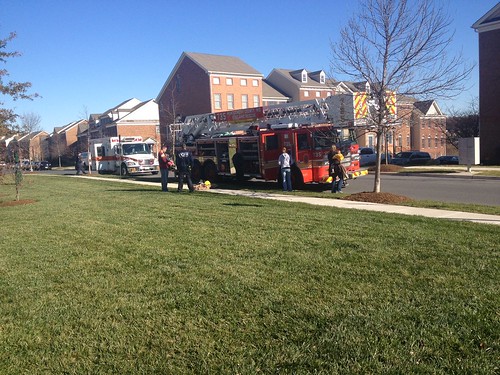
Simple task
can be a potentially life-saving one
Daylight savings time ends
November 4
th and the Montgomery County Fire and Rescue Service
(MCFRS) is urging all residents to check the batteries in their smoke alarms
and carbon monoxide detectors to ensure they are working when they change their
clocks this weekend.
“Home fires injure and kill thousands every year,” said Fire Chief Richard
Bowers. “Smoke alarms that are properly installed and maintained play a vital
role in reducing fire deaths and injuries. I encourage everyone to test their
smoke alarms, replace any alarms that are 10 years or older and conduct a home
fire drill this weekend.”
The peak time for home fire fatalities is between 11 p.m. and 6 a.m. when most
families are sleeping. A working smoke alarm dramatically increases the chance
for survival and provides advance warning of a fire resulting in more time to
react and put a home escape plan into action.
Help keep your family safe by following
these fire safety tips:
1.
Install
smoke alarms on all levels of your home, including the basement and in all
sleeping areas.
2.
Test
smoke alarms each month to ensure they are working. Replace batteries annually,
as needed.
3.
Plan
and practice home fire drills regularly. Decide in advance who will help family
members that may need assistance escaping (young children, older adults or
people with disabilities).
4.
Retire
old smoke alarms and replace with new ones every 10 years, or as recommended by
the manufacturer.
5.
Make
sure children recognize the sound of your smoke alarm and how to respond to its
signal.
6.
Know
your battery type. Smoke alarms equipped with 10-year batteries are becoming
more common. Check your smoke alarms to see what type of battery it has. The
10-year batteries don’t need to be replaced annually, but the entire smoke
alarm does need to be replaced every ten years.
The
Montgomery County Fire and Rescue Service will provide and install smoke alarm batteries
at no cost to residents and will provide and install smoke alarms for residents
that cannot afford them. Please call 311 for information and be sure to bookmark
our website for year-round safety information at www.mcfrs.org/mcsafe and sign up to
follow us on twitter.















